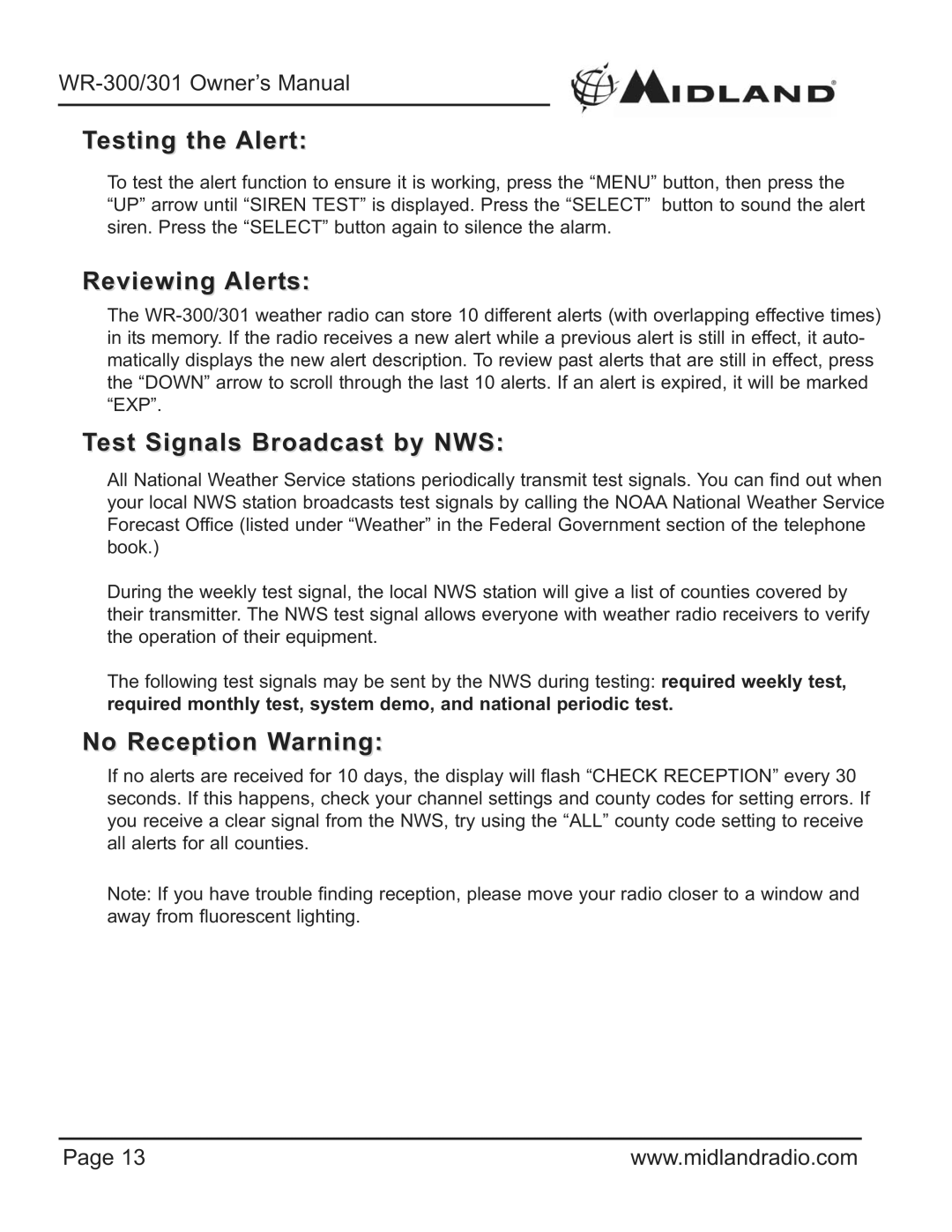
Testing the Alert:
To test the alert function to ensure it is working, press the “MENU” button, then press the “UP” arrow until “SIREN TEST” is displayed. Press the “SELECT” button to sound the alert siren. Press the “SELECT” button again to silence the alarm.
Reviewing Alerts:
The
Test Signals Broadcast by NWS:
All National Weather Service stations periodically transmit test signals. You can find out when your local NWS station broadcasts test signals by calling the NOAA National Weather Service Forecast Office (listed under “Weather” in the Federal Government section of the telephone book.)
During the weekly test signal, the local NWS station will give a list of counties covered by their transmitter. The NWS test signal allows everyone with weather radio receivers to verify the operation of their equipment.
The following test signals may be sent by the NWS during testing: required weekly test, required monthly test, system demo, and national periodic test.
No Reception Warning:
If no alerts are received for 10 days, the display will flash “CHECK RECEPTION” every 30 seconds. If this happens, check your channel settings and county codes for setting errors. If you receive a clear signal from the NWS, try using the “ALL” county code setting to receive all alerts for all counties.
Note: If you have trouble finding reception, please move your radio closer to a window and away from fluorescent lighting.
Page 13 | www.midlandradio.com |
